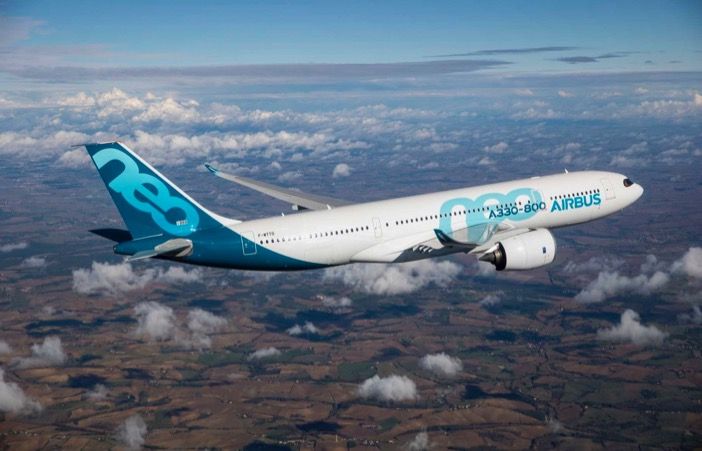Airbus’ A330-800 has received joint type certification from the European Aviation Safety Agency and the Federal Aviation Administration.
The A330-800, which is the smaller of the re-engined A330neo aircraft is powered by the Rolls-Royce Trent 7000 engine and features a new wing and sharklets made of lighter composites. According to Airbus these and other fuel-saving technologies mean the aircraft uses 25% less fuel when compared with older generation aircraft of a similar size.
Entry into service of the A330-800 is expected later this year, although Airbus is yet to release information about the first customer or delivery date.
The certification flight-test campaign for the A330-800 was successfully performed by aircraft MSN1888, which completed the programme in 370 flight test hours and 132 flights since its first flight in November 2018.
Certified initially with a maximum take-off weight of 242 tonnes for a range capability of up to 7,500 nautical miles, the A330-800 will typically seat up to 260 passengers in three classes, or up to 406 travellers in a single-class configuration.
The larger A330-900, which has a range of 7,200 nautical miles (13,330km) and a capacity of up to 287 passengers in three classes or 460 in a single-class configuration. The -900 was certified in September 2018.
The A330-800 and -900 are based on the earlier A330-200 and -300. The two aircraft share 99% of the same parts.
The -800 variant is 5m (16ft) shorter than the -900 and has a taller tailfin to provide longitudinal stability compensation. Its shorter fuselage also means that the engines are closer to both the front and the back of the aircraft.
To date the A330neo Family has won 337 firm orders from 22 operators.
Read our in-depth article on the flight testing of the A330-800 here.





